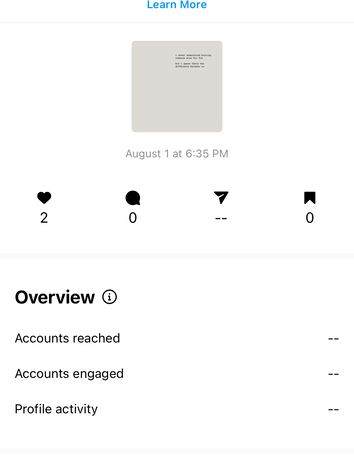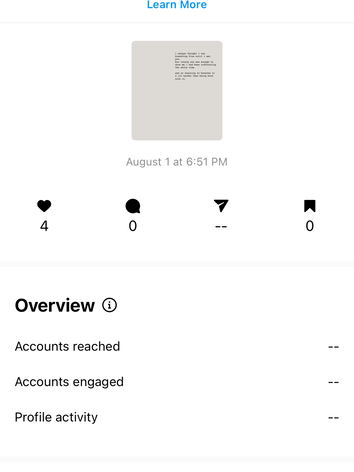DIGITAL ARTEFACT FINAL REPORT
the effectiveness of poetry to evoke and convey emotion from the dual perspective of both the reader and writer
The media niche I opted to explore for my digital artefact project was poetry. Poetry as a genre has hundreds of layers to peel back, evaluate and enjoy as both readers and authors battle with pathos and ethos as they delve into its contained investigation of meaning. We as an audience of this niche have come to understand that poetry has a significantly large, unconscious effect on our psyche; which includes its ability to trigger our emotions, strengthen our brains, and provide an environment for self-reflection. As a whole, it is a very extensive and complex niche to explore as there are hundreds of themes, avenues, and types to create when authorially participating within this environment. Therefore, as a result, the audience of this niche cannot be categorised into a general group, and rather is split amongst common ideas of the genre. As discussed in my first blog post for this project, poetry as a research method and autoethnographic tool explores both the past and present lived experiences of the individuals existing and operating within this forum. Furthermore, poetic autoethnography is created when the poetry is written by the researcher themselves in relation to their own life experiences (What is Poetic (Auto) Ethnography?, 2022), which is what I intend to create.
The digital artefact I created was to write original poetry stemming from themes present in my own life and environment. From here, I was then posting them to a dedicated space on social media which I also created, to form a general community of individuals who could empathise or sympathise with my emotions and experiences. With this practice, I was attempting to create a space of bonded community where people could then share their thoughts and experiences if they wished, or at the very least, to know they aren’t isolated in their own experiences and emotions. From here, I was attempting to provide my audience with the suggestion of poetry as a tool for the outward expression of internalised thoughts. In addition to this, being on social media, my account was also being suggested to other users on the platform, therefore growing my audience and increasing my reach. This was evident as I had individuals following my account throughout the whole process, people I had not previously discussed my ideas with and were unaware of my project and its intentions. As a result, my Digital Artefact contributes significantly to my selected media niche of poetry, as well as, additionally introducing new people to the niche.
A book from the American Psychological Association describes Autoethnography as, “a researcher writing about a topic of significant personal relevance, situating their experiences within their own personal context” (Poulos, 2021). Further to this, Méndez goes on to add that ‘the aim of autoethnography is to recreate the researcher's experience in a reflexive way, aiming at making a connection to the reader which can help him or her to think and reflect about his or her own experiences’ (Méndez, 2013). Therefore, in regard to my own experience with autoethnography, this process has significantly aided me in critically reflecting on my personal experience as an audience member of poetry as a media niche. Writing and reading poetry are very different lenses to take on when exploring this forum. Reading poetry takes a ‘selfish’ approach as the reader is only concerned with the words themselves and the emotions associated, to evoke reflection as a result; a very surface-level exploration of the text. However, writing poetry is a more complex means of investigating the niche as the writer is concerned with the content on a much deeper personal level as it relates to their personal context. From here, the author must go further to determine how to effectively adapt these experiences from occurrences to emotions, and communicate them to a general audience, whilst also leaving an impact and eliciting reflection. Using autoethnography as a tool in poetry has allowed for me to develop a deeper understanding of the writers' role and perspective within the niche, leading me to appreciate the readers' output to a significantly greater extent. By participating in the creation of poetry, I have learnt not only its weight in positively aiding the outward expression of internalised thoughts and emotions but also, grown to further respect the power of language in communicating ideas and dispositions. Consequently, this process has improved my understanding of how we receive words and statements, and thus, the impact these can leave on a person’s psyche and frame of mind.
In pursuing this project, I created an online persona in order to remain consistent and stay connected to my audience. This was made up of two identities to encapsulate my entire viewing forum. The first one is, the public persona. This consisted of presenting my most vulnerable side to a published audience, a side that is mostly unknown to others. By doing so, I opened myself up to the emotional risk of this uncertain exposure, highlighting to my followers, the need and normality of doing so when coming to terms with difficult and unfamiliar information and emotions. Thus, opening the forum up as a safe space for expression and connectedness. Lastly, the second and final persona I created was a collective persona. This was derived as a result of the collective sharing of emotions, present within my writing, between me as the author and my audience. The combination of these two identities, aided my research by appealing to all user types within my audience, as it was common for individuals to be able to relate to at least one aspect of my project. The online presence for my research remained somewhat consistent, as I posted original content 2-3 times per week for a series of weeks. This was in an attempt to gain enough following and engagement to be able to gauge an understanding of my audience and conduct an autoethnographic study on them and the power of poetry. As a result, the feedback was strong and I was able to mostly gather the information needed, however, higher engagement would have been much preferred.
My autoethnographic approach for this assessment consisted of two main ideas. These being capitalising on my extensive love for reading poetry to answer my research question; which is ‘the effectiveness of how emotion can be evoked through powerful text.’ In addition to writing my own poetry to further explore the complexity of being the creator to discuss vulnerability and convey personal emotions. The applied combination of both of these approaches allowed me to not only investigate my personal experiences as an audience member in my niche but also to expand my expertise and understanding of the field through the creation of personal writing. Furthermore, several ethnographic skills including, approaching, conceptualising, and contextualising were applied to help build my digital artefact in its best form. Approaching was utilised to select the best methods of data collection and inquiry and research; conceptualising helped to focus and redefine my approach to create something that was interesting, tangible, and understandable. Finally, contextualising drew lines between objects, people, and events in the field of poetry, to aid in mapping out my forum for high reward and engagement. By mapping out the most common themes of poetry, the basic aspects of poetry, motivations for writing poetry and key poetic figures that are relevant to my study, it was significantly beneficial in beginning to understand the function of my niche and its key components. Lastly, the overall focus of my digital artefact stemmed from an appreciative point of view. By using this lens and my prior knowledge of the niche, I was able to further shape my DA through the open analysis of my niche through a positive framework; in addition to, strengthening my capacity to generate new knowledge.
In conclusion, this project was extremely rewarding in aiding my journey of personal growth, as well as deepening my love and appreciation for poetry, as a style of writing and an outlet for expression. After weeks of conducting an autoethnographic study, it can be deduced from the research question and analysis that followed, that poetry does have significant effectiveness in both evoking and conveying emotion from the dual perspective of both the reader and writer.
References
Fritscher, L. (2021) Recovering from the fear of vulnerability, Verywell Mind. Verywell Mind. Available at: https://www.verywellmind.com/fear-of-vulnerability-2671820 (Accessed: October 23, 2022).
Méndez, M. (no date) Autoethnography as a research method: Advantages, limitations and criticisms, Colombian Applied Linguistics Journal. Facultad de Ciencias y Educación de la Universidad Distrital, Bogotá Colombia. Available at: http://www.scielo.org.co/scielo.php?script=sci_arttext&pid=S0123-46412013000200010 (Accessed: October 23, 2022).
Poulos, C.N. (2021) Essentials of autoethnography. Washington, DC: American Psychological Association.










